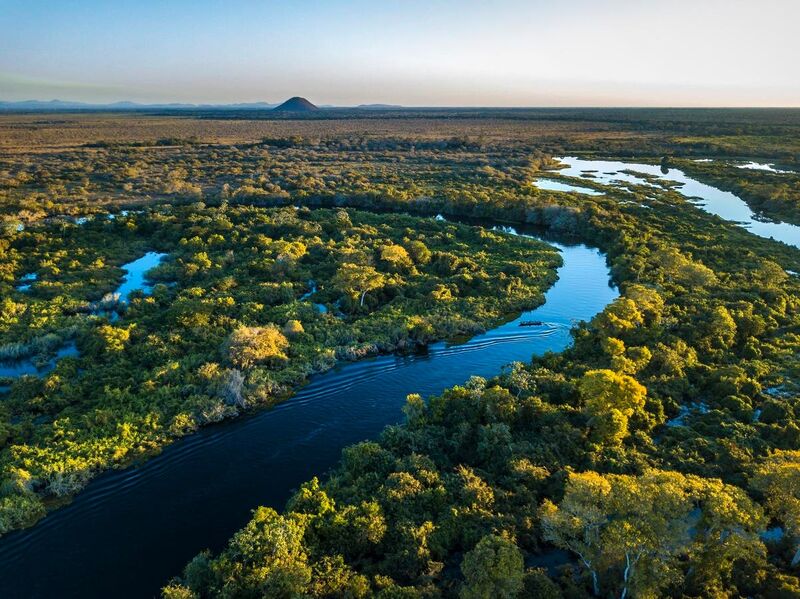Introduction
As global ecosystems face unprecedented pressures—from deforestation and habitat loss to climate change and pollution—the financial risks tied to biodiversity have never been clearer. Yet until recently, corporate sustainability efforts have largely focused on carbon emissions and climate-related disclosures, leaving nature-related dependencies and impacts underreported. At the 2024 World Economic Forum, over 320 organizations from 46 countries committed to nature-related financial disclosures based on the Taskforce on Nature-related Financial Disclosures (TNFD) framework, underscoring the urgency of integrating biodiversity into mainstream ESG strategies. Academic research also highlights that biodiversity loss impairs critical ecosystem services—such as pollination, water filtration, and soil fertility—directly affecting business operations and long-term value creation.
Understanding Biodiversity and Its Financial Risks
Biodiversity encompasses the variety of life on Earth, from genes and species to ecosystems. Its decline threatens supply chains (e.g., agricultural inputs), regulatory compliance (e.g., new nature-protection laws), and market access (e.g., consumer demands for responsible sourcing). Companies that ignore nature-related risks may face stranded assets, increased operating costs, and reputational damage. A recent industry guide notes that risks like declining freshwater availability, soil degradation, and zoonotic disease prevalence can disrupt operations across sectors—including agriculture, pharmaceuticals, and consumer goods—mandating that firms recognize and quantify these dependencies to safeguard future cash flows.
TNFD: A New Standard for Nature-Related Disclosures
Launched in September 2023, the TNFD’s Final Recommendations (Version 1.0) provide a global, market-led framework for organizations to report on nature-related dependencies, impacts, risks, and opportunities. Structured around four pillars—governance, strategy, risk and impact management, and metrics and targets—TNFD mirrors the successful architecture of the Taskforce on Climate-related Financial Disclosures (TCFD) while expanding its scope to encompass biodiversity and broader natural capital considerations . The TNFD’s goal is to shift global financial flows toward nature-positive outcomes by equipping businesses with standardized tools to identify and disclose nature-related financial risks and impacts (Nature-related financial disclosures: the new frontier for ESG risks).
The Rise of Biodiversity Metrics in ESG Strategy
Incorporating biodiversity metrics—quantitative indicators that track species populations, habitat health, and ecosystem services—is critical for moving beyond qualitative statements to data-driven decision-making. Cross-framework analyses reveal that biodiversity-related metrics span areas such as conservation status, endangered species counts, ecosystem degradation rates, and forest cover change, yet their adoption varies widely across reporting standards (The Next Frontier in Sustainability Reporting | ESG Book Research). The TNFD’s “Metrics and Targets” pillar specifically calls for companies to set nature-positive targets (e.g., net-gain in species abundance) and measure progress using robust indicators, a practice that is rapidly gaining traction among leading firms (The new frontier of nature-related financial disclosures: what the finance industry needs to know).
Technology Enabling Biodiversity Measurement and Reporting
Advanced technologies are transforming how biodiversity data is collected, analyzed, and integrated into ESG reporting platforms:
-
Remote Sensing & GIS: Satellite imagery and geographic information systems map land-use changes, deforestation rates, and habitat fragmentation at scale.
-
IoT & Environmental Sensors: Sensor networks monitor water quality, soil moisture, and acoustic biodiversity (e.g., species presence via sound recordings) in real time.
-
eDNA & DNA Barcoding: Environmental DNA sampling accelerates species detection in water bodies and soils, providing early warning of ecological shifts.
-
AI & Machine Learning: Algorithms process large datasets to detect biodiversity trends, predict species risks, and automate anomaly detection.
By feeding these data streams into TNFD-aligned reporting tools, organizations can generate transparent, auditable biodiversity disclosures alongside climate metrics (The Next Frontier in Sustainability Reporting | ESG Book Research).
Integrating Biodiversity Metrics into ESG Reporting Tech
Leading ESG software platforms are embedding TNFD guidance to facilitate nature-related reporting:
-
Data Aggregation Modules collate biodiversity indicators from satellites, field surveys, and third-party databases.
-
Materiality Assessment Workflows help firms evaluate which nature-related issues are most financially material, guiding focus on high-impact metrics.
-
Dashboard & Visualization Tools display real-time biodiversity KPIs—such as changes in key species populations or habitat loss percentages—enabling management oversight.
-
Scenario Analysis Engines model future biodiversity scenarios (e.g., impact of land-use changes), informing strategic risk management.
Such integrated solutions streamline TNFD compliance and empower stakeholders to make nature-informed investment and operational decisions (Nature-related risks: the TNFD recommendations are here).
Challenges and Solutions
Despite growing momentum, companies face hurdles in adopting biodiversity metrics:
-
Data Gaps & Standardization: Inconsistent methodologies and limited baseline data impede comparability.
-
Cost & Expertise: High costs of field surveys and advanced analytics require specialized skills.
-
Governance & Accountability: Assigning clear roles for nature risk management can be complex.
To overcome these challenges, firms can partner with scientific organizations for data sharing, leverage open-source biodiversity databases, and invest in capacity building through cross-functional teams that include ecologists alongside financial and sustainability experts (Examining TNFD: Biodiversity & Nature Overview - Clarity AI).
Best Practices and Future Outlook
-
Start with Pilot Projects: Test biodiversity metrics within a single business unit or supply-chain segment to refine data collection methods.
-
Engage Stakeholders Early: Collaborate with local communities, NGOs, and regulators to enhance data quality and social license to operate.
-
Set Science-Based Targets: Align nature targets with frameworks like the Science Based Targets Network (SBTN) to ensure credibility and rigor (BrandWatch: Corporate nature-friendly claims to be put under the microscope).
-
Integrate into Financial Reporting: Link biodiversity performance to financial KPIs (e.g., cost savings from ecosystem services) to embed nature in core business metrics.
Looking ahead, advances in remote sensing resolution, AI-driven ecological modeling, and blockchain-enabled provenance tracking promise to further enhance the granularity and trustworthiness of biodiversity disclosures.
Conclusion
As investors, regulators, and consumers demand more comprehensive sustainability reporting, biodiversity metrics—anchored by the TNFD framework—are becoming a vital component of ESG strategies. By harnessing cutting-edge technologies and embedding nature-related data into reporting platforms, organizations can not only comply with emerging disclosure requirements but also unlock new opportunities for risk mitigation, innovation, and value creation in harmony with the planet’s biodiversity.
